
Meditations on Analysis Paralysis
A meditation on how overthinking disguises itself as wisdom, and how clarity is more often earned through small, reversible steps than discovered through perfect plans.
Page 1 | 107 posts
All essays and updates published in 2025.

A meditation on how overthinking disguises itself as wisdom, and how clarity is more often earned through small, reversible steps than discovered through perfect plans.

Returning to Arch Linux becomes a reminder that good systems don’t shout: they simplify, sharpen, and get out of the way. Through that lens, this post reflects on resisting feature-bloat, and shares quiet quality-of-life updates to Valeon and GigFin.

A guided walk from Jung’s Psychological Types to MBTI and onward into Socionics—information metabolism, Model A, and why type is less a label than a relational architecture.
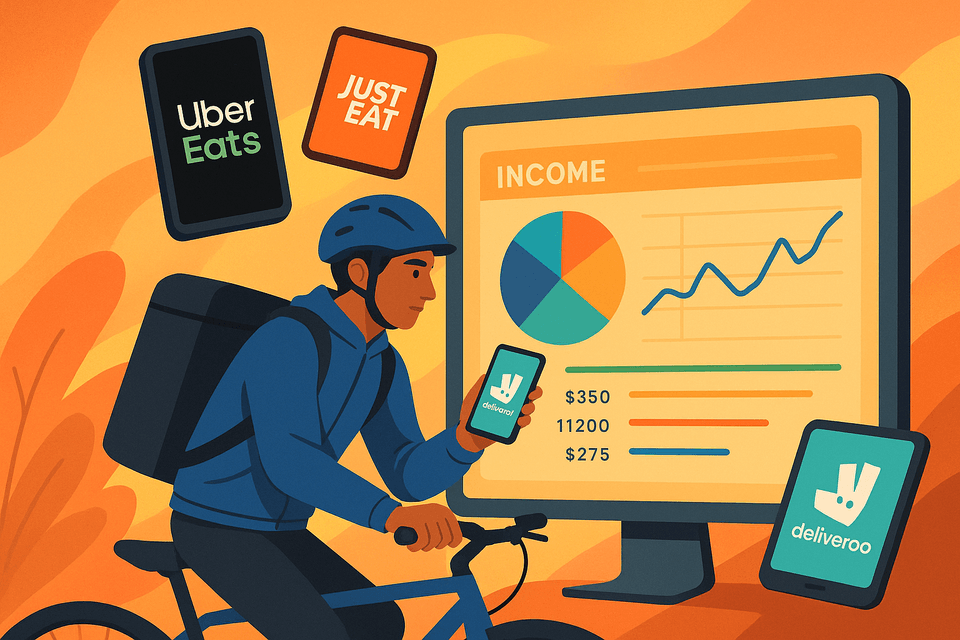
An introduction to GigFin, a free and open source income tracking app built for gig workers navigating multiple platforms and seeking clearer insight into their earnings.
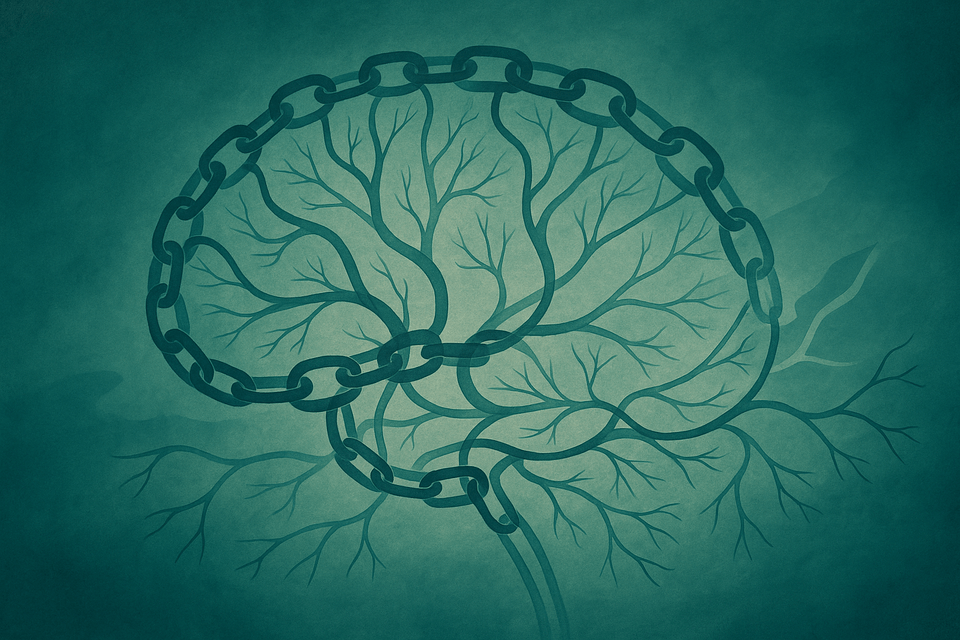
An exploration of the invisible chains that link our thoughts, emotions, and assumptions, and how becoming aware of them can reshape how we see ourselves and the world.

An exploration of how hacking and exploit markets serve not only criminals but also governments, intelligence institutions, and security companies that quietly purchase and weaponise systemic insecurity.

A contemplative exploration of fasting as a metabolic pause that lowers insulin, awakens glucagon and ketones, and gives the liver, brain, and cells the time and space they need to repair.

A reflection on the finite life of the knower against the seemingly unbounded horizon of knowledge, and on what it means to keep learning and speaking in the face of that tension.
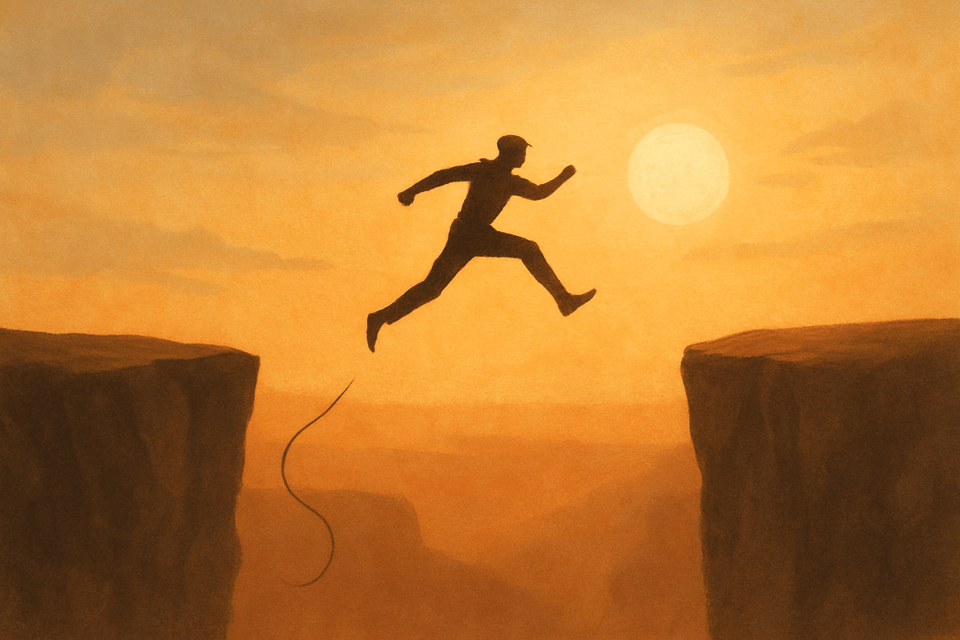
An exploration of how mentality, self-confidence, and the willingness to cut the internal rope of restraint shapes our actions and the reality we come to inhabit.

A meditation on divine protection, destiny, and the quiet moment when mercy steps aside and leaves us to meet the consequences we have chosen.
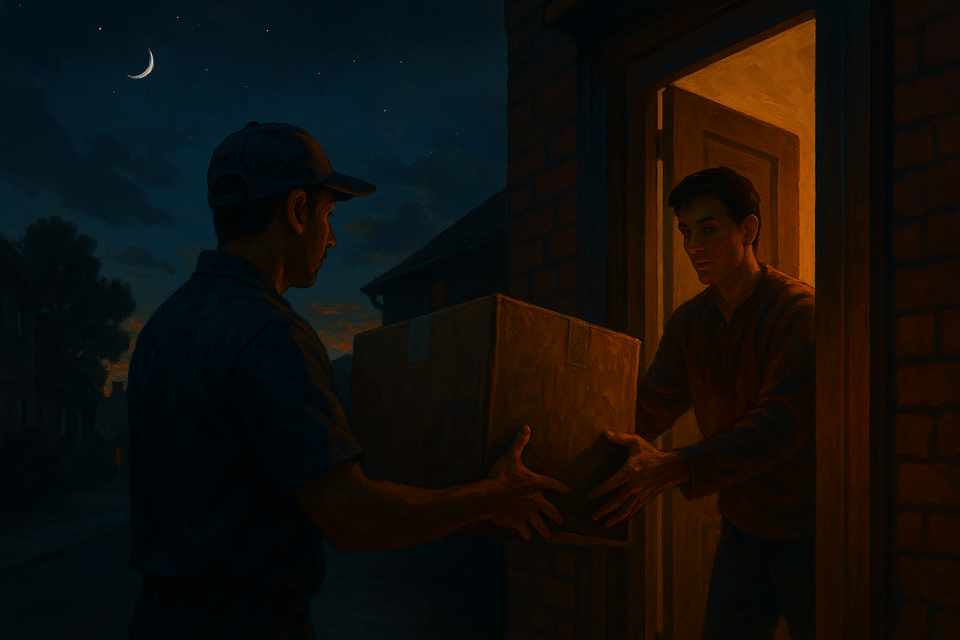
Reflections from late-evening delivery rounds on how the gap between how life looks and how it feels reveals a deeper discrepancy between the ideal order of reality and the lived weight of experience.

Exploring how quantitative easing and tightening reshape the dollar’s balance-sheet architecture, and how taxation functions as a burn mechanism within a fiat token system.

In a post–gold standard world, the US dollar behaves less like a claim on scarce metal and more like a state-issued token—making taxes less about “funding” government and more about burning tokens to manage inflation and anchor demand for the currency.

An exploration of the “Valeon Lemma”: when we appeal to genuine uncertainty, intellectual honesty requires us to admit not only feared worst cases, but also the possibility of unexpected goods.

A meditation on the cyclical rhythm of history—how moments like 1918, 1920, and 1929 reveal repeating human patterns of crisis, forgetting, and consequence, and what it would mean to truly learn from them.

A behind-the-scenes tour of Valeon’s new audio and math pipeline—OpenAI TTS, MathJax + Speech Rule Engine, and MFA-powered word-level highlighting—focused on making reading and listening feel more like a living companion than a static archive.

Time changes value, and every choice carries a “compared to what?”—a lens that links the time value of money, opportunity cost, and discount rates to real decisions in life and business.

Newton’s three laws as axioms, F=ma as the grammar of change, and how energy and momentum conservation emerge—told with minimal calculus and hands-on experiments.
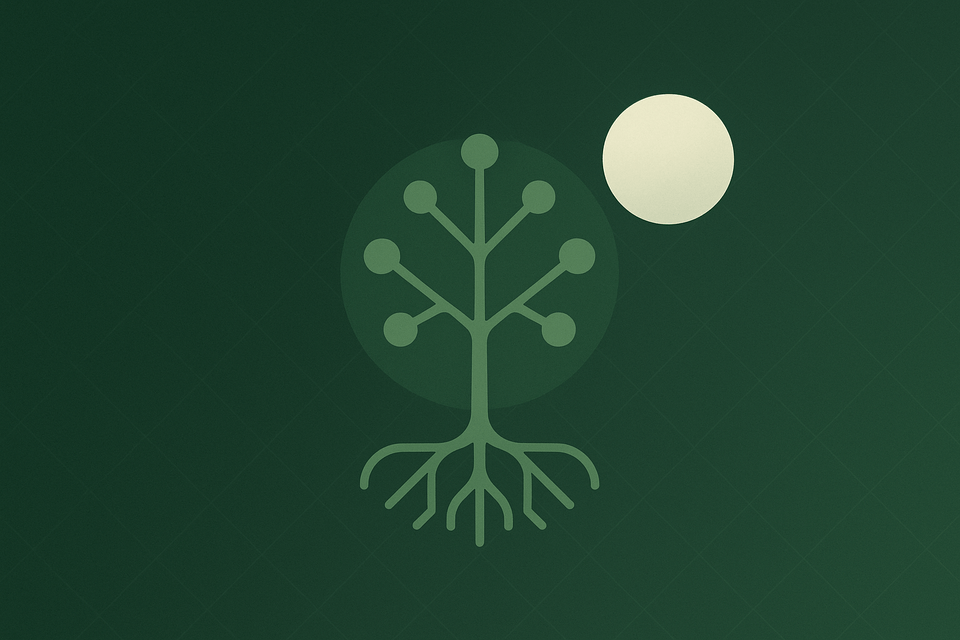
The Contemplative Path is now Valeon—a rebrand aligned with strength, clarity, and long-horizon, systems-level thinking. We’re opening submissions, rolling out improved author profile pages, and continuing to ship reader- and contributor-friendly improvements across the stack.

A practical lens (T5) for seeing the transactional rails beneath modern life—Asset, Price, Ledger, Protocol, Power—and for designing humane counters: thick consent, commons-first systems, and dignity-preserving friction where it matters.

A Jungian guide to the “dark night of the soul” as a mental crucible where shadow returns, projections withdraw, and the Self presses for a larger life. We trace the alchemical arc (nigredo → albedo → rubedo) and offer practical vessels—active imagination, dreamwork, somatic anchors, boundaries, and when to seek clinical help.

Memory isn’t a vault but a living economy: fragile patterns in a narrow workspace of attention become durable traces when structure matches capacity and consolidation—sleep, pruning, and schema-building—does its work.

We keep rewarding spectacle over stewardship. This essay maps the incentives and patterns that elevate counterfeit leaders—and offers practical tests and design fixes citizens can use to prefer accountability, integrity, and long-horizon governance.

Habit isn’t a productivity hack but the architecture of consciousness: repetition delegates will to reflex, shaping identity. The aim is “conscious automatism”—habits that serve understanding.

A quick tour of recent upgrades: Vercel-powered builds, end-to-end image optimization, clean print styles, a Buttondown newsletter, an OpenDyslexic reading option, saner taxonomies, an Obsidian+Git authoring flow, open-sourced Markdown posts, and a new OpenAI-TTS audio pipeline with podcast RSS.

Markets speak their own language — full of ratios, Greeks, and curious words like backwardation or contango. This guide breaks down some of the most common (and misunderstood) terms used in trading and investment circles.

Markets, like minds, move not only on facts but on expectations. The self-fulfilling prophecy shows how shared beliefs turn into order flow, liquidity events, and ultimately the prices that seem to “confirm” those beliefs.

Physics turns wonder into practice: from Archimedes’ geometry and instruments to Galileo’s timing and idealisations, nature begins to speak in numbers we can test.

Responsibility is not a cage but a frame: the weight we consciously choose to carry shapes character, gives freedom direction, and turns endurance into purpose.

The “close” is a mechanism, not just a timestamp. This essay explains how daily and weekly closes differ in auction/settlement, liquidity, and halt structure—why that creates gaps, and how those gaps behave across futures, FX, and crypto.

A quiet meditation on the ordinary abundance—warm water, clean clothes, bread and eggs, a roof, work, and care—that hides in plain sight, and on gratitude as the ground of desire rather than its denial.

A critical comparison of Descartes’ rational foundationalism and Jung’s depth psychology—with Anthony Gottlieb’s skepticism as counterpoint—arguing for an integrated practice of self-knowledge that reunites clarity and depth.

Measurement is never perfect. This essay explores how systematic and random errors shape what we can know, why replication and calibration matter, and how humility restores meaning to precision.

Intention is the unseen vector of action. This essay explores how motive shapes judgment, why outcomes alone mislead, and the daily practices—proportion, transparency, consent, and repair—that make good intent legible.

Language is not a fixed code but a living archive—shaped by etymology, environment, and attention—through which perception evolves and the world is made speakable.

Perception is not raw reality but a construction shaped by biology, memory, and belief. From the science of color to the mysteries of synesthesia, this essay explores how our worldview frames what we see, hear, and know.

Before physics was an equation, it was a question. This essay traces its roots—from myth and wonder to natural philosophy—as humanity’s first attempt to read the book of nature.

Beneath every grand theory lies a quiet lattice of first principles and lemmas. This essay explores the bedrock and bridges of reasoning—and why inhabiting a school’s foundations matters more than memorising its slogans.

The Overton Window isn’t a fixed pane but a living frame that shapes what a society can see, say, and imagine. Tracing its shifts reveals our collective identity—and our responsibility within it.

We build our worlds on belief—often reinforced by the echo of others—until illusion collapses and demands the harder work of integrity, repair, and renewal. This essay traces the arc from chorus to shattering to redemption.

A European robin “sees” Earth’s magnetic field through quantum effects in its eye—an elegant bridge between physics and life. This essay follows how cryptochrome, radical pairs, and entanglement helped launch quantum biology and reframes what it means to navigate.

From Google Maps rerouting entire towns to Amazon Flex unlocking apartment doors, corporations are reshaping our infrastructure and routines—quietly trading our privacy for convenience.

Six days off, a fresh Astro build, and a clean slate for writing: better theming and layout control, first-class LaTeX, and the freedom to ship my own features—because I thought I could code this better myself, and I did.

Sleep isn’t passive—it’s nightly maintenance. Slow-wave and REM rebuild muscle and connective tissue, balance hormones, and flush daytime metabolic waste via the glymphatic system to restore neurotransmission. The payoff: sharper cognition, steadier mood, healthier metabolism, heart, and immunity.

NuScale’s small modular reactors promise more than clean, modular power on the ground—they hint at a future of airborne carriers the size of stadiums, loitering in the skies for months at a time. This post explores how SMR technology could unshackle endurance, transforming not only energy but the architecture of power itself.

“Letting go” has become the modern mantra. Yet if we relinquish all we desire, what remains to root a life? This piece argues for open-handed love—attachment, protection, loyalty—and the chosen weight of responsibility: showing up for one another, guiding and growing together. Is this not what life is about?

Kindness is not weakness or naïveté. It is strength forged through suffering, the power to harm restrained, the beauty of choice made again and again. Unlike niceness, which avoids conflict, kindness endures it—and transforms it.

Investing and trading aren’t opposites so much as different relationships to time. This guide clarifies frames—from scalping to position trading—and argues that most edge is born in ranges, not headlines. Choose your horizon, respect its rules, and let discipline—not drift—set your course.

Back when BitMEX paid maker rebates, I turned ~$30 into ~$2,000 by posting passive liquidity and guarding inventory. This post breaks down the rebate math, spread capture, and kill-switches—and shows how that small-edge discipline connects to “Trading Big Bags,” where structure, not bravado, determines survival.

Capital size should dictate strategy. What works for a $1,000 trader becomes reckless at $10M. The recent $17M loss on Hyperliquid shows how fragile structures — high leverage, linear contracts, and concentration — turn conviction into catastrophe. This essay breaks down why efficiency, not ego, defines survivability, and how inverse contracts, venue distribution, and leverage discipline transform outcomes.

EVs are often criticised for their manufacturing footprint, but this misses the crucial point: they have no tailpipes. In cities like London, where millions of ICE cars exhale poison daily, EVs clear the air we actually breathe. They shift emissions upstream to a few factories and power plants—sites that can be regulated and cleaned far more easily than millions of exhaust pipes. Like catalytic converters before them, EVs are not perfect, but they are a vital step in reclaiming breathable cities.
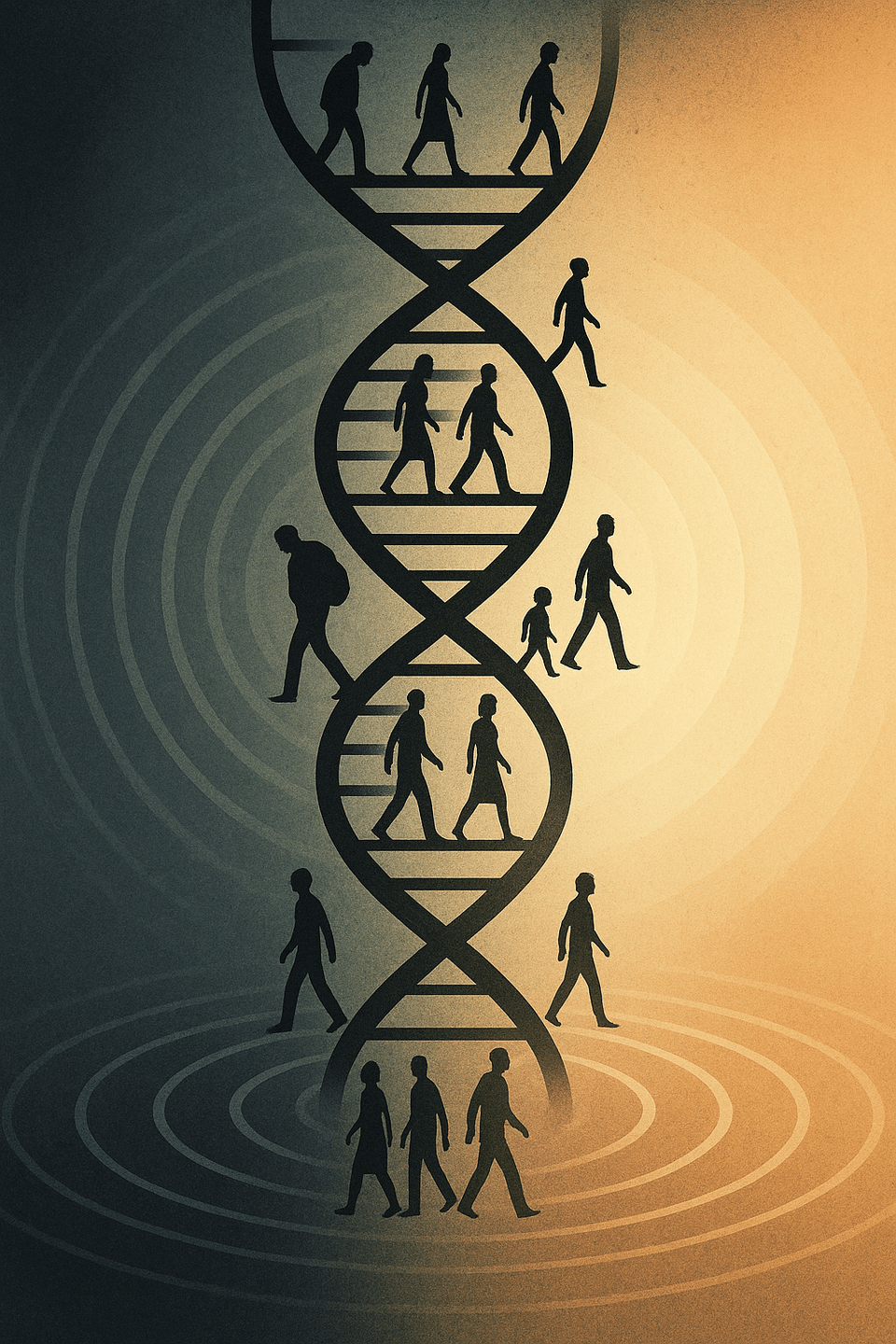
Epigenetics shows that we inherit more than DNA—we carry the echoes of our ancestors’ trauma, hunger, and resilience written into our biology. These epigenetic marks, passed across two to three generations, shape health, weight, stress, and even how we respond to the world. Yet awareness gives us agency: by confronting what we carry, we can choose healing and create a legacy of renewal for those who come after us.

Finding the cheapest ride in London isn’t as simple as picking one app. Prices fluctuate across Uber, Bolt, FreeNow, Smartzee—and even black cabs. Drawing from my time as a driver, I explore the idea of a “Ride Compass”: an app that scans all platforms, compares fares, and ensures passengers always get the best deal.

Ownership is more than paperwork. This proposal maps land titles to NFTs so the blockchain becomes the registry itself—legally recognized, programmable, and auditable—uniting code and courts for faster settlement, stronger proofs, and privacy-preserving compliance in the UK/EU.

A plastic fob once felt modern. Today, it is wasteful, clumsy, and obsolete. Digital passes stored in Apple or Google Wallets can make access smarter, safer, and more sustainable—from offices and hotels to Airbnb rentals and real estate management. The key fob solved a problem of the last century. The digital pass answers to this one.

If time is not a river or a dimension but only the distance between events, what then becomes of us? Is a life measured by years, or by the density of change it contains? This essay traces the haunting question of time—not to answer it, but to wander through its puzzles: the minus sign in the line element, the ghost of dt, antimatter’s supposed reversal, and the possibility of a physics without clocks. Time appears less as something we move through and more as something we ourselves measure—a spacing of events that refuses ever to be final.

Every year, millions of containers sail half-empty—wasting money, space, and fuel. ShipSpace reimagines global logistics as a shared marketplace, matching unused container capacity with businesses that need affordable shipping. Cheaper, fairer, greener: the future of shipping is shared.

Evil does not overwhelm the world, yet a single act of cruelty can feel larger than life—like a stain on a white shirt. Goodness is the quiet backdrop of daily life, but it gains meaning only when it resists. This essay explores the dichotomy of good and evil, the silence of the good, and the weight of responsibility that makes moral choice luminous.

Bear markets and recessions are not failures of the system but essential corrections that restore discipline, clear away excess, and redirect capital toward true innovation. While modern policy seeks to avoid downturns at all costs, history shows that renewal and long-term opportunity often emerge from collapse. From the dot-com bust to the COVID-19 recession, it is in the ashes of contraction that the seeds of future growth are sown.

Wars are not only fought on battlefields but in balance sheets. From Lockheed Martin’s rising stock to British Gas’s soaring profits and offshore billions siphoned by corrupt aides, conflict becomes the perfect laundromat—where fear, scarcity, and blood are spun into profit. This essay exposes how war launders money, legitimacy, and power in plain sight.

We trust science, law, and society for their apparent rigour — but beneath the surface lie hidden assumptions and convenient fictions mistaken for certainty. This essay explores how social apriories shape our systems of knowledge, from physics and medicine to the courtroom, revealing that what feels like stone is often only scaffolding. The task is not to discard these illusions, but to see through them with humility and discernment.

Traffic is not random—it is the product of inflow and outflow. When more cars enter a road segment than leave it, congestion forms. What lingers, however, is not just the incident itself but the slow, staggered release of human reaction. This essay explores how self-driving cars can shorten those tails, and how a new layer of road infrastructure—information beacons broadcasting simple, low-latency truths—could transform traffic from reaction into cooperation.

How many trees make a forest? This essay explores the blurred lines between subjectivity and objectivity, the relativity of perception, and the thresholds created by language. From forests to fairness, poverty to truth, we uncover how meaning emerges not in absolutes, but in the gradients and relationships that shape our shared reality.

Why does our universe exist in matter, when physics tells us it should have been born in perfect balance with antimatter? From CPT symmetry to Feynman’s vision of particles moving backward in time, from Penrose’s maps of spacetime to Hawking’s idea of imaginary time, the mystery deepens. This essay explores a radical possibility: that antimatter was never lost, but displaced into a shadow universe, unfolding along a different rhythm of time. Could this hidden twin still whisper across the folds of spacetime — perhaps even reaching from tomorrow into today?

The Understanding Market Mechanics series closes with the blindfold — the final veil that hides as much as it reveals. Markets are not neutral or transparent, but choreographed theatres of asymmetry where most begin at a disadvantage by design. This is not a guide to profit, but an invitation to awareness, humility, and the imagining of something fairer than the game we have inherited.

Market makers are often described as neutral referees — silent guardians of liquidity. But neutrality is an illusion. This essay explores spreads, inventory balancing, OTC desks, adverse selection, and hedging to show how dealers shape price through vested interest. To see the hidden hand is the first step in no longer being led by it.

Aging is not just skin deep—it is written into our very DNA. As telomeres shorten and proteins lose their shape, the body’s essential functions slowly unravel. Death is not an intruder but a quiet countdown coded within us. Yet in this inevitability lies not despair, but meaning—the chance to live fully in the time we have.
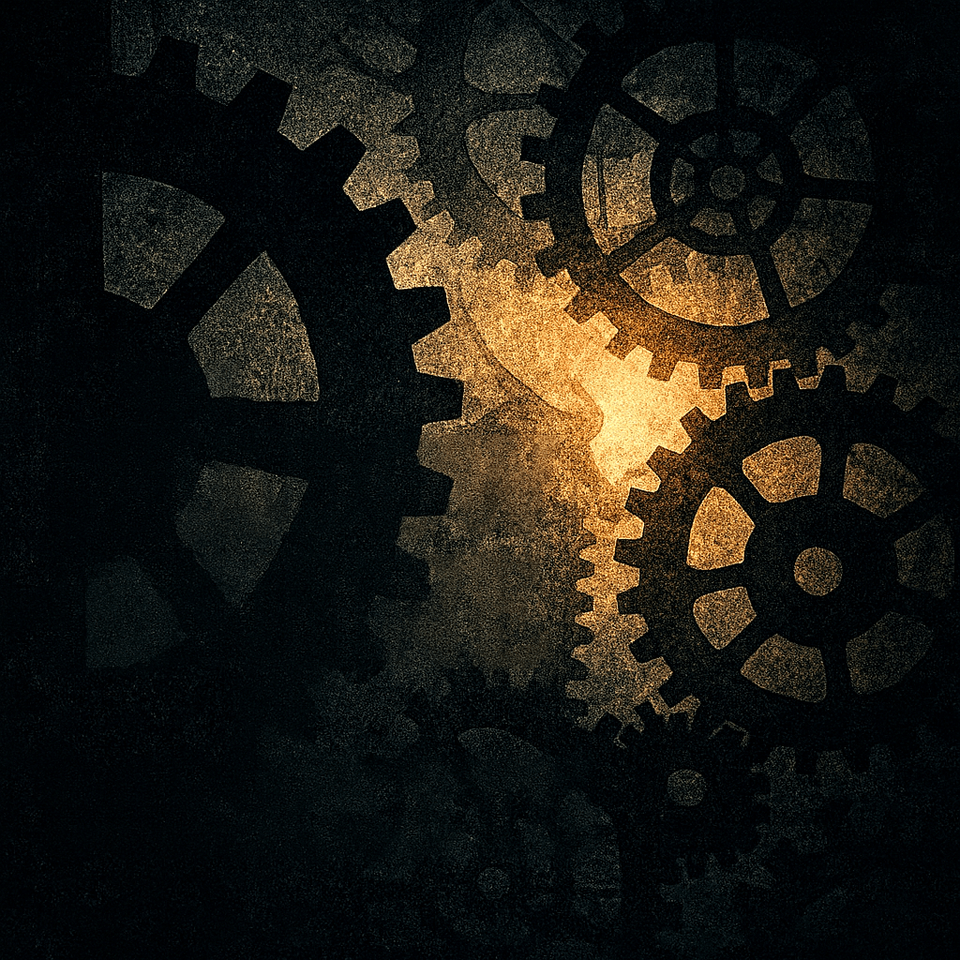
Derivatives are not mere side bets. They are the shadow engine of markets — the hidden machinery of futures, perps, options, and ETFs that reshapes liquidity, andlifies risk, and choreographs price itself. To read markets well is to see beyond candles and charts, and to listen for the gears turning beneath them.

In markets, cycles are not random—they are patterned expansions and contractions shaped by accumulation, distribution, and the relentless hunt for liquidity. By weaving Wyckoff mechanics with Elliott Wave theory, we can begin to see markets not as chaos but as choreography: waves rising, breaking, and receding with purpose. Yet volume is the compass, and in unregulated arenas like crypto, where wash trading distorts the signal, discernment becomes survival.
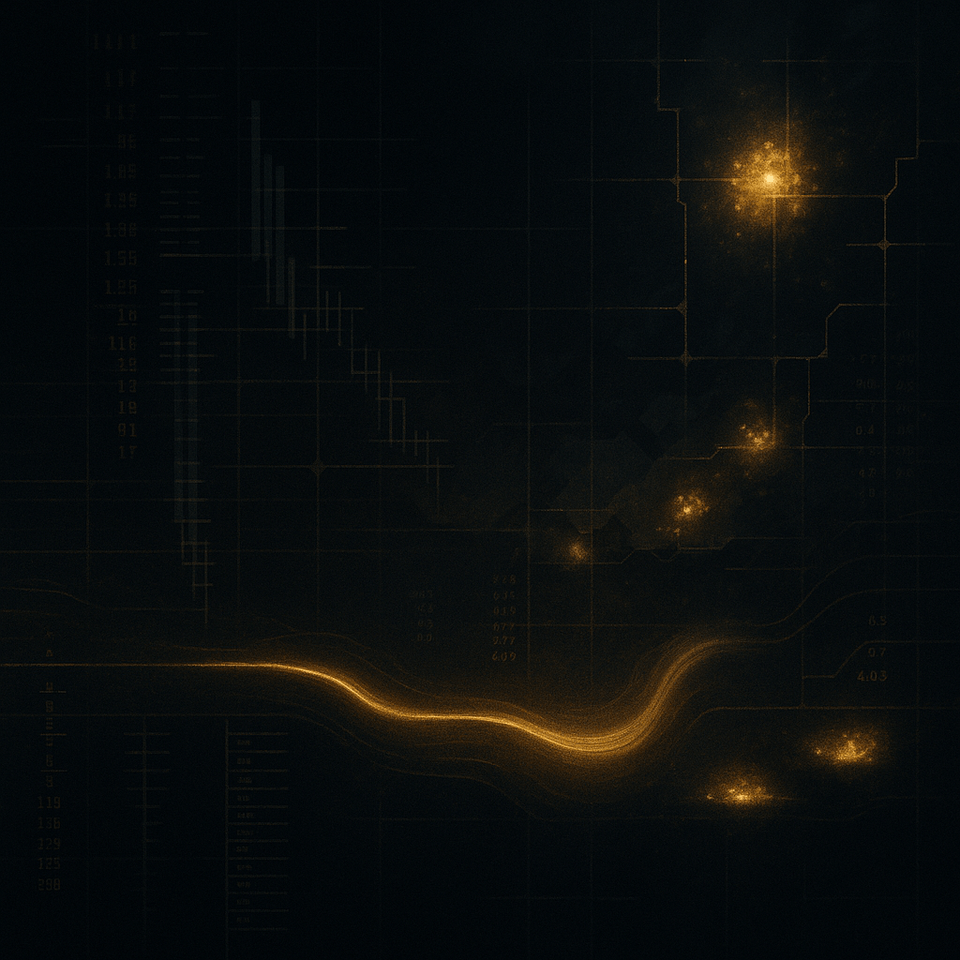
In this third entry of the Understanding Market Mechanics series, we move beneath the surface of charts and candles into the bloodstream of the market itself: liquidity. From stop runs and iceberg orders to liquidity pockets, fair value gaps, price discovery, and reversion to the mean, this post explores how liquidity shapes every move. The market is not random—it is choreographed. Learn to read the current, and price stops looking like noise and starts speaking as a language.

In markets, the 80/20 rule is more than a cliché—it’s the operating system. Pareto efficiency ensures that once an edge becomes visible, it disappears. The zero-sum nature of trading means every gain is another’s loss. To survive, it’s not enough to know the truth—you must anticipate what others will believe next, and act before they do.

Prices can change in seconds, but consequences can take decades to arrive. The secondary market effect and arbitrage reveal why — and how short-term gains often mask long-term costs. From high-frequency trading to global politics, understanding these concepts helps us see beyond the present into the slow, unfolding arc of cause and consequence.

Most people are taught to work for money, but not to make it work for them. For new investors with modest means, building wealth is less about chasing quick wins and more about choosing the right tools — and avoiding their traps. This guide explores three key “vessels” for your financial journey: the mutual fund, the money market fund, and the index fund, including the “always up” nature of indices like the S&P 500, and how to use them wisely for long-term growth.

When healing becomes a liability and prevention is unprofitable, what we call “healthcare” becomes something else entirely—a weapon of economic control. This piece explores the true cost of privatised medicine and why public healthcare is not just a policy, but a moral imperative.
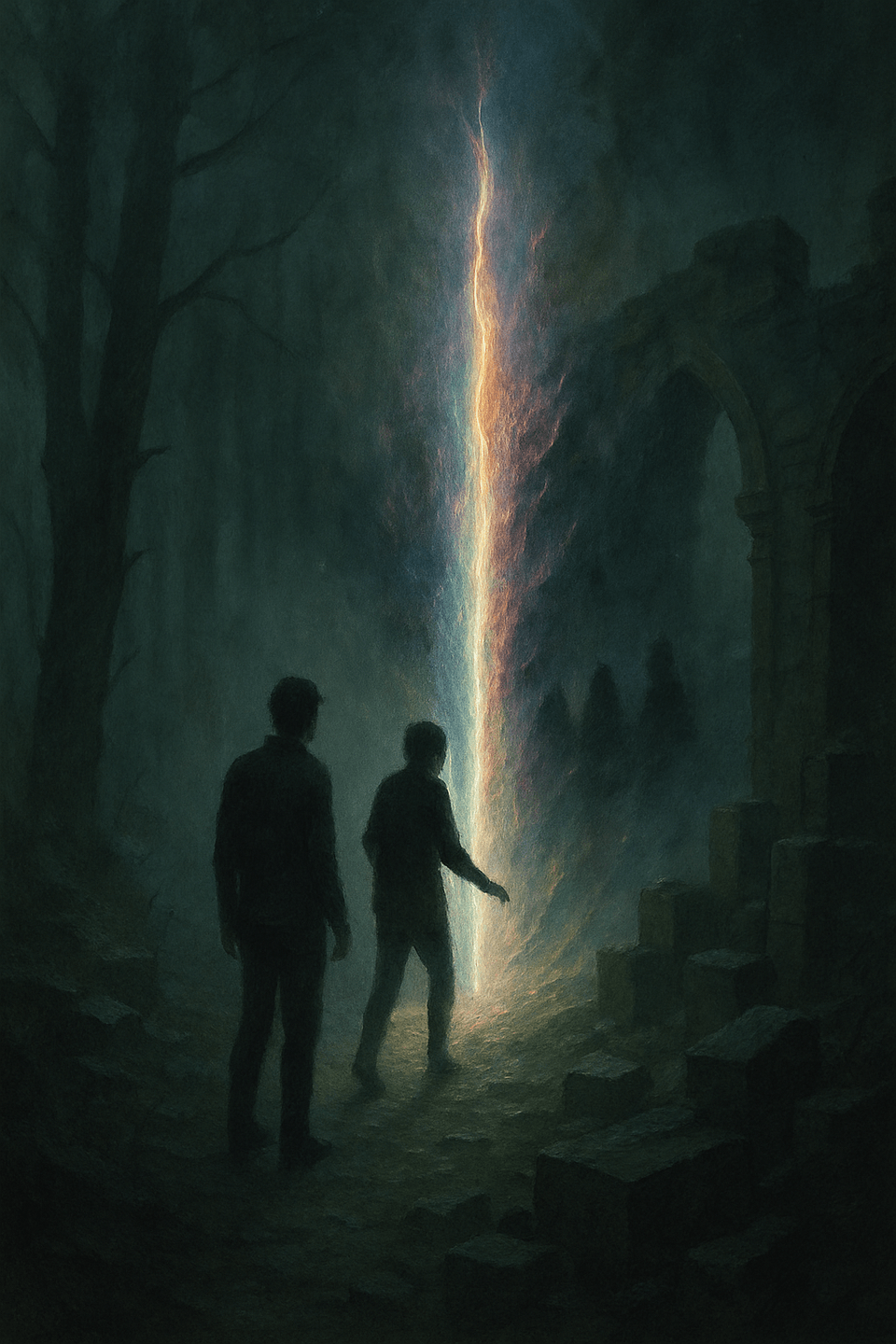
The veil between worlds grows thin—not by prophecy or permission, but by consequence. Those who follow the path it reveals do so at their peril, for what lies beyond is neither good nor evil, but something older, hungrier, and far less forgiving.

From the outside, American democracy looks less like a system of the people and more like a well-staged illusion. With Trump back in office and the machinery of power unchanged, the illusion of choice is fading. This piece explores the decline—not just of politics, but of belief itself.

A quiet reflection on pain, healing, and companionship. Sometimes the longest roads lead us to the gentlest places—and to people who choose to walk beside us, not ahead.

Abandonment wounds run deep, shaping how we navigate love, trust, and safety. Through understanding trauma, conditions like BPD, and the power of compassionate healing, we can begin to rewrite the painful inner monologue and move toward genuine connection and self-compassion.

The Israeli state may not survive the decade — not by invasion, but by the slow collapse of legitimacy, narrative, and power. As Palestine rises and the world rebalances, we are not witnessing an apocalypse, but the unmasking of illusion.
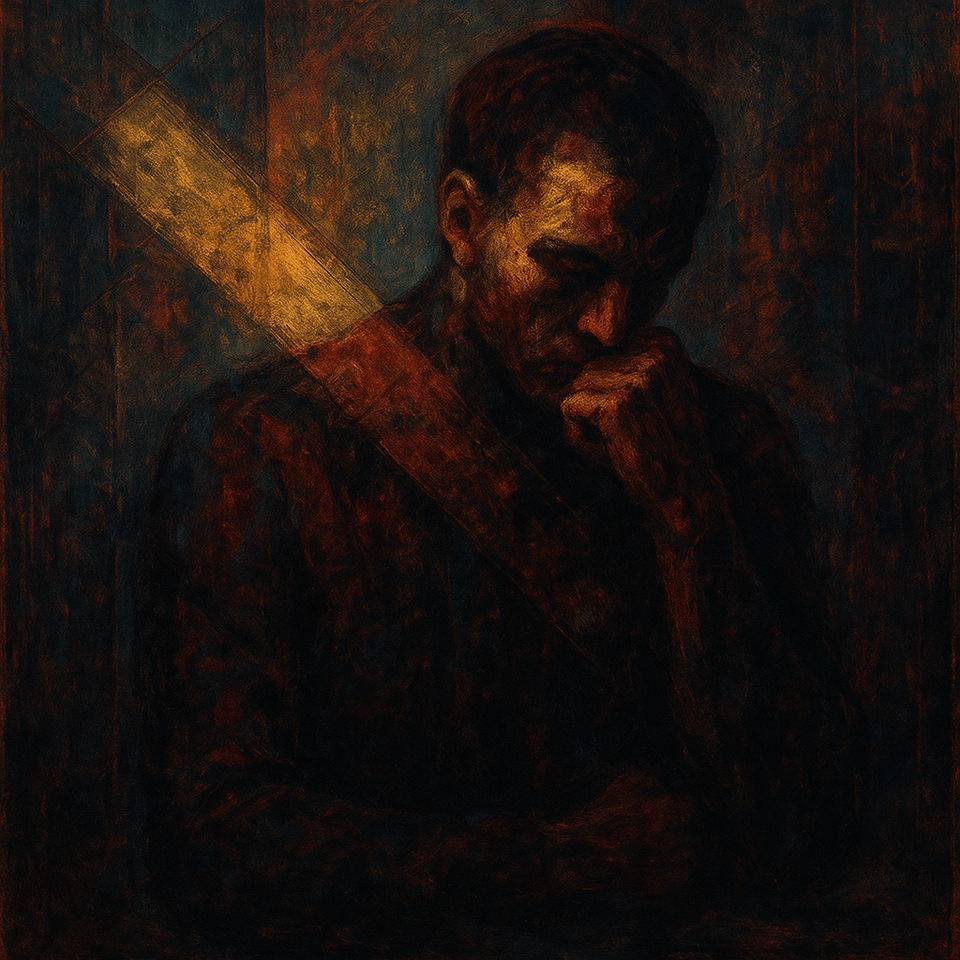
“Shall I tell you how the justice I sought began seeking me too— As if reality bent its will in the face of tears dropped in silence?”
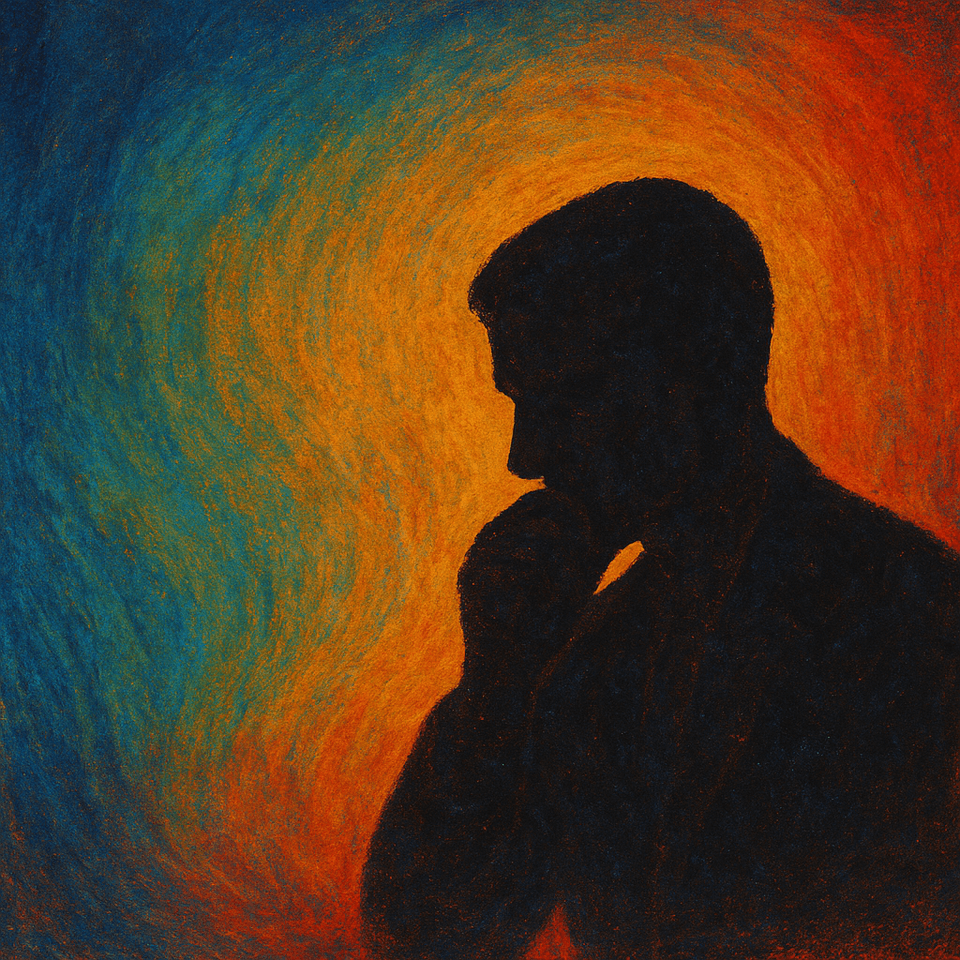
A reflection on the tension between humility and hidden power—this piece explores the quiet strength of being underestimated, the dangers of overconfidence, and the subtle warfare of perception in a world that mistakes silence for weakness.

The claw of power may never vanish. But if wrapped in velvet—wielded with wisdom, chosen with care—it may no longer wound, but shape. A better world doesn’t begin by abolishing power, but by reimagining who deserves to hold it—and why.

In a world that rewards contradiction and curated personas, those of us who seek coherence between thought, word, and action often find ourselves alone. This reflection explores the tension between autism, honesty, and the quiet refuge of solitude—where truth is not just valued, but necessary for peace.

Debt can be the spark that ignites creation—or the accelerant that fuels collapse. In its best form, it precedes value. In its worst, it replaces it.

Africa is not the next frontier — it’s the current one. As global power shifts and traditional markets plateau, the key to generational wealth lies in Africa’s untapped potential. From logistics and agriculture to mineral extraction and industrial production, the continent is poised to become the core of a new global economy.

True integrity isn’t proven when it’s easy to uphold—it’s revealed when betrayal is the faster path to gain. And when someone takes that path, only to turn back once they’ve failed, what they feel isn’t remorse—it’s regret for being caught too soon.

Too many choices can feel like freedom—but often, they become a hidden burden. In a world of endless possibilities, we find ourselves overwhelmed, paralyzed, and longing for direction. This essay explores how the abundance of choice can imprison us, and why true liberation may lie in commitment, not in endless options.
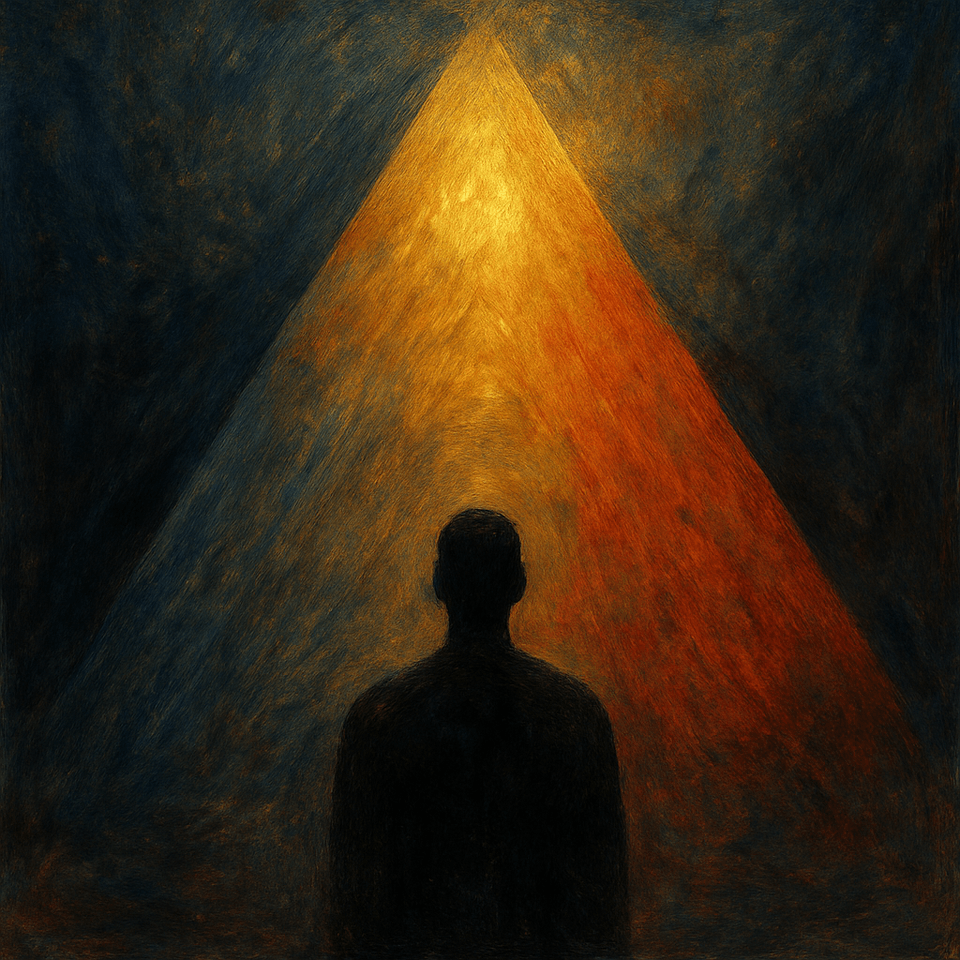
Most traders enter the market chasing fairness and opportunity—but beneath the surface lies a harsh statistical truth: the structure itself demands imbalance. This blog post explores how the Pareto Principle shapes market outcomes, revealing why consistent winners are few, and why most must inevitably lose.
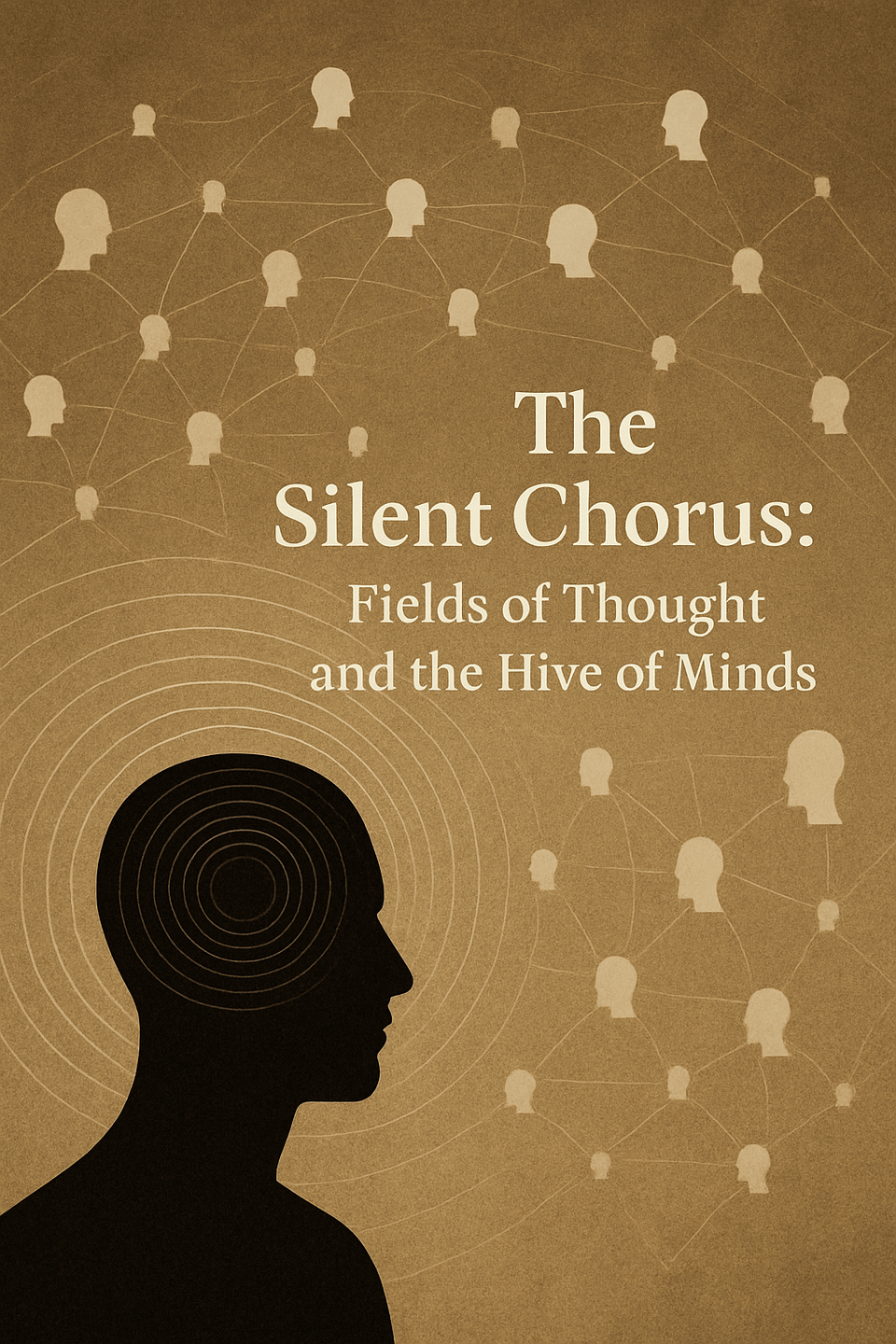
What if thought isn’t confined to the mind, but part of a shared field—an invisible hive of human consciousness? This post explores the idea that our beliefs, emotions, and even silences ripple through a collective mindspace, shaping not only ourselves but the world we co-create.
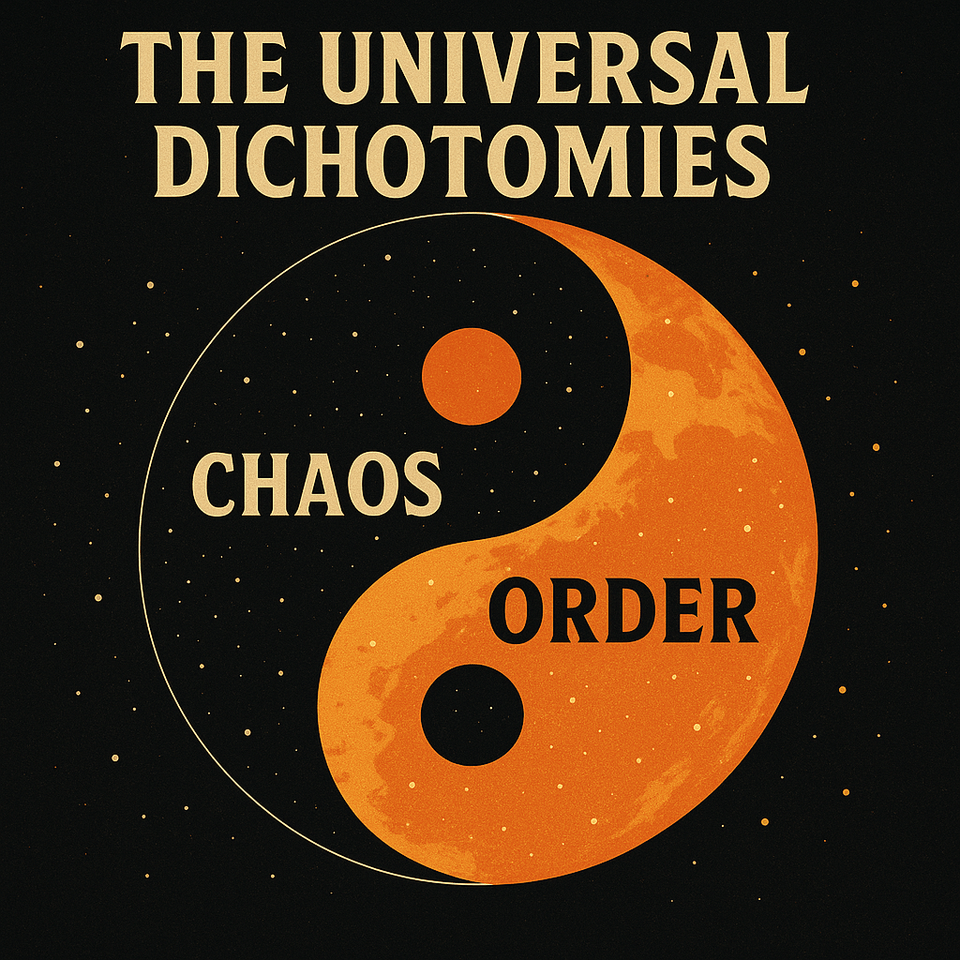
In this post, we explore the fascinating interplay between chaos and order, showing how the conservation of information, entropy, and the rise of complexity shape both the universe and human consciousness — revealing what I call the Universal Dichotomies.
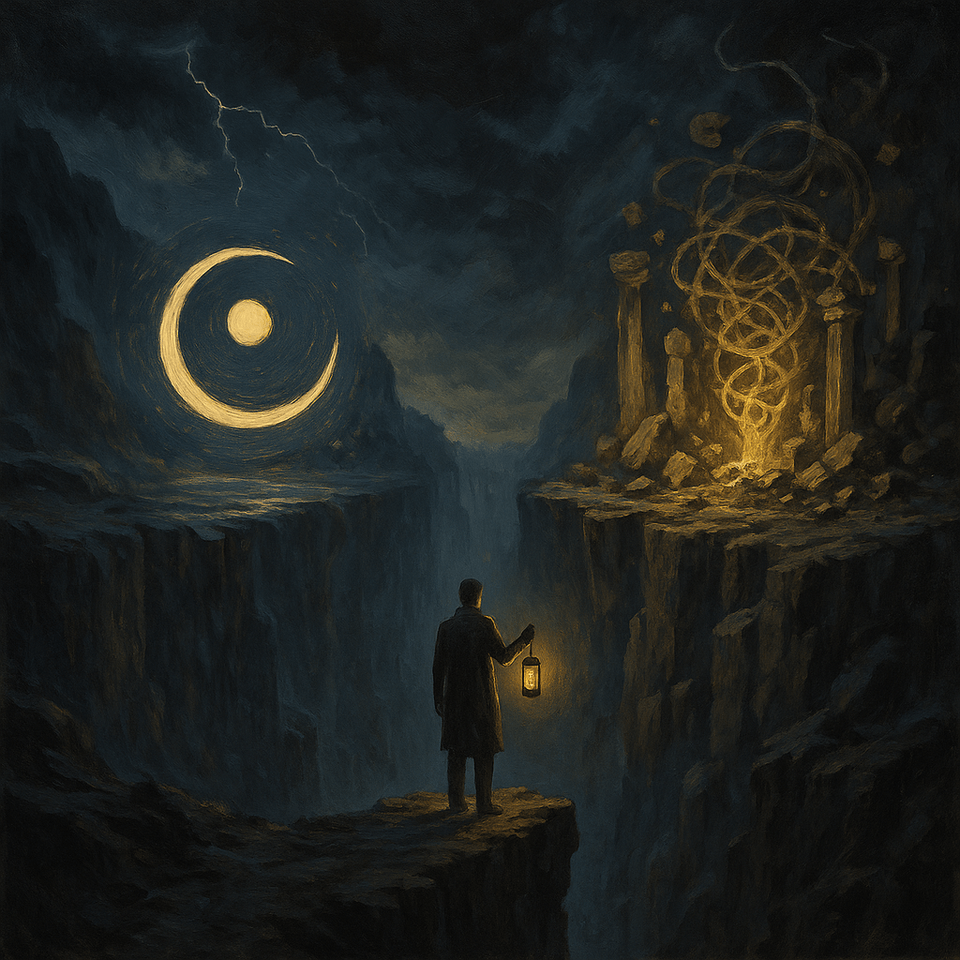
There is a vast and often invisible canyon between the ethical ideals we claim to uphold and the lived reality of power, law, and social order. This post explores how our morals, ethics, and legal systems are not eternal truths, but manmade constructions—malleable, political, and often weaponized. To live ethically in a world built on contradictions requires more than belief; it demands confrontation, courage, and the refusal to look away.

We live in a world not of certainties, but of probabilities — a world where every choice opens a branching path of possible futures. This post explores how seeing life as a dynamic, statistical landscape reshapes how we understand the present, imagine the future, and navigate the delicate balance between action and surrender in a fragile, unpredictable world.
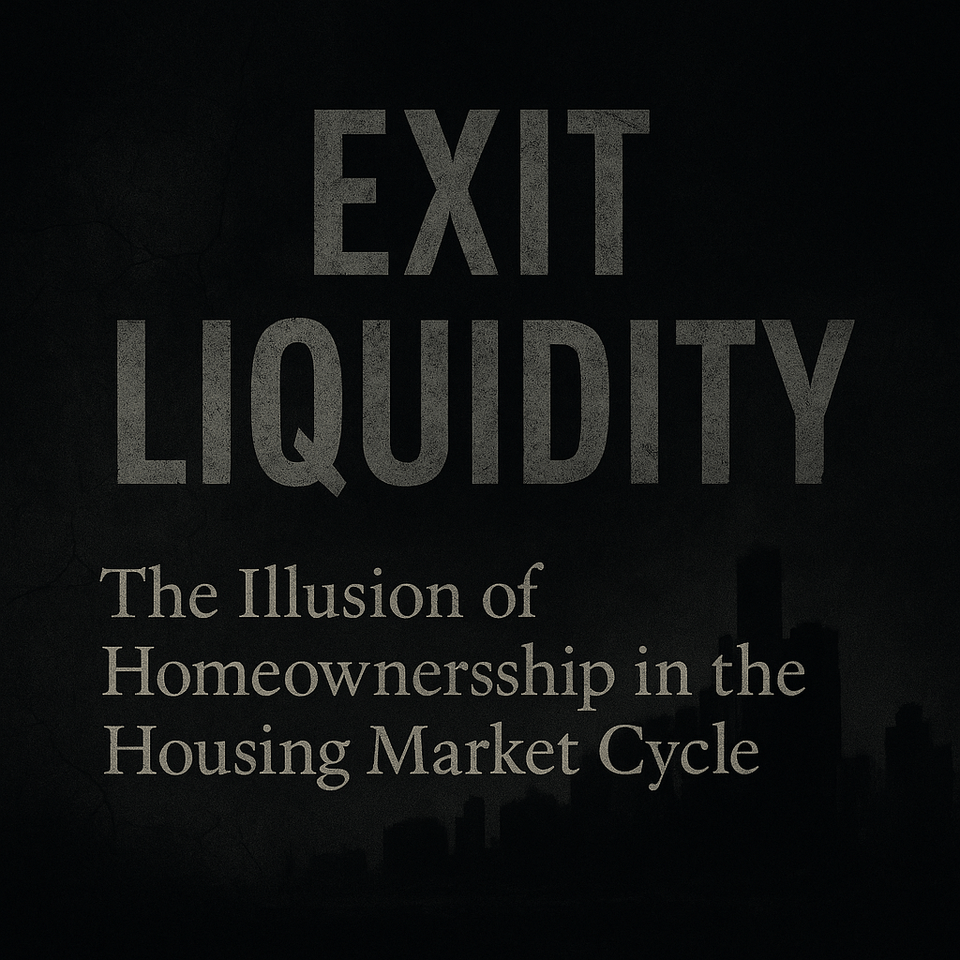
For decades, homeownership has been sold as the ultimate symbol of success — but behind the glossy promises, today’s housing market reveals a harsher truth. As prices soar and wages stagnate, the last wave of buyers is being lured into a cycle where risk is quietly handed down from early winners. This is the age of exit liquidity — and the illusion of homeownership is its most seductive trap.

The content describes the quiet decline of American empire characterized by exhaustion and extraction rather than growth. As ruling elites profit from this decay, they strategically prepare for a post-collapse world. The average citizen remains marginalized, facing a future uncertain, grappling with divisions and distractions while empires unravel.
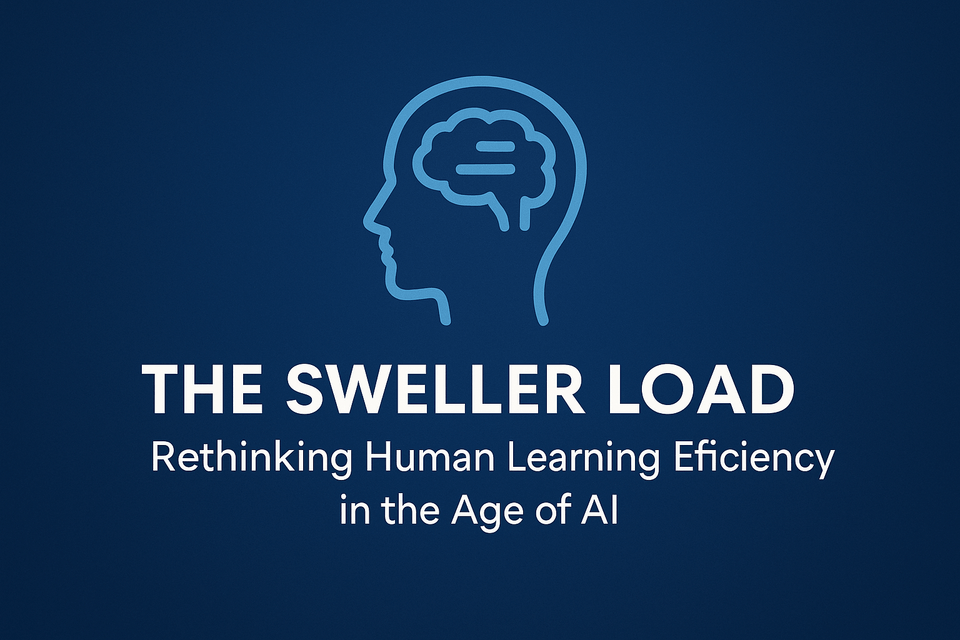
Cognitive Load Theory changed how we understand learning — but what if we could push it even further? Introducing the “Sweller Load,” a new framework for dynamically optimizing how information is delivered, using AI to match and expand human cognitive bandwidth. This could reshape the future of learning, thinking, and human potential itself.

Modern democracy promises freedom, but delivers carefully engineered illusions of choice. Behind the rituals of voting and protest, true power remains untouched — hidden in the structures we are never meant to question. This post explores the choreography of consent and the deeper realities beneath the democratic facade.

“The most powerful voice you will ever hear is the one no one else can.” The Unseen Engine Every human being walks the world with a voice echoing silently in their mind, a narrator unseen, yet ever-present. It whispers through choices, floods moments of stillness, and often masquerades as truth. But this monologue is not
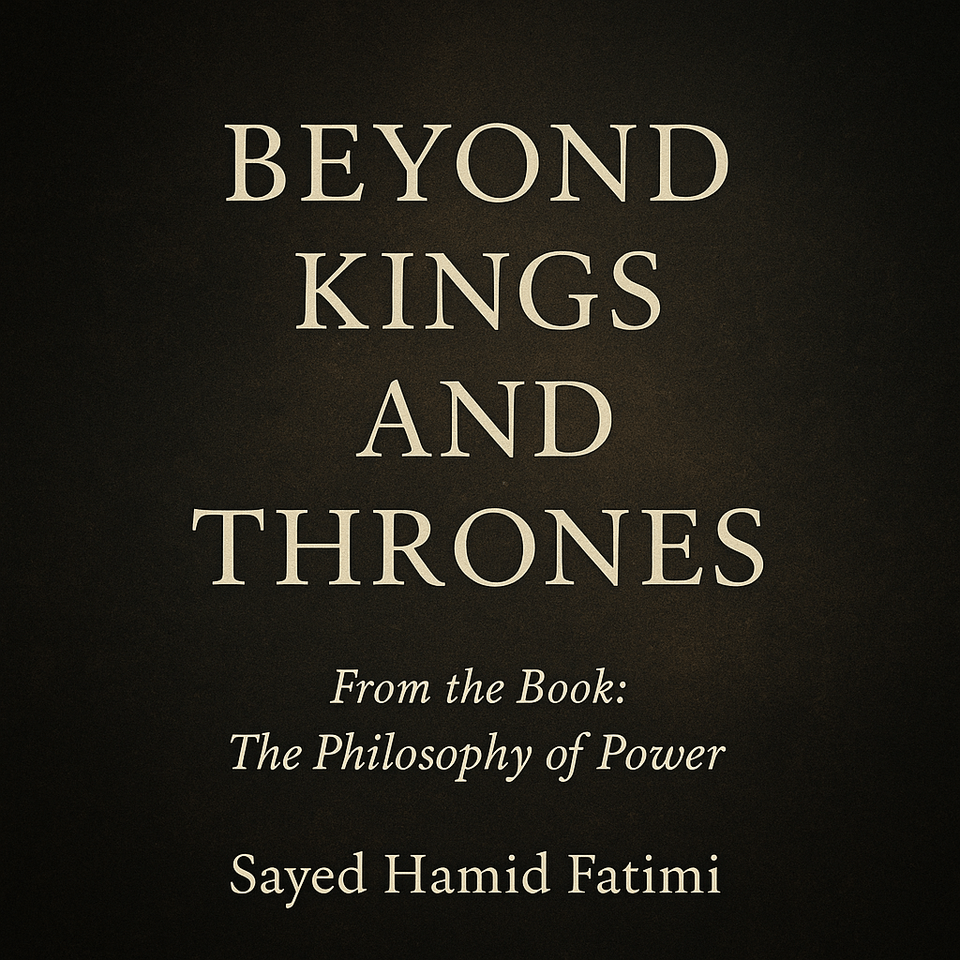
Power Without a Face The world today is not ruled by kings, but that doesn’t mean it is free from kingship. Power has simply changed costumes. It has abandoned thrones for terminals, and decrees for data. Once, we could see authority. Now, it breathes through code and commerce—quietly scripting our lives through convenience, algorithms, and
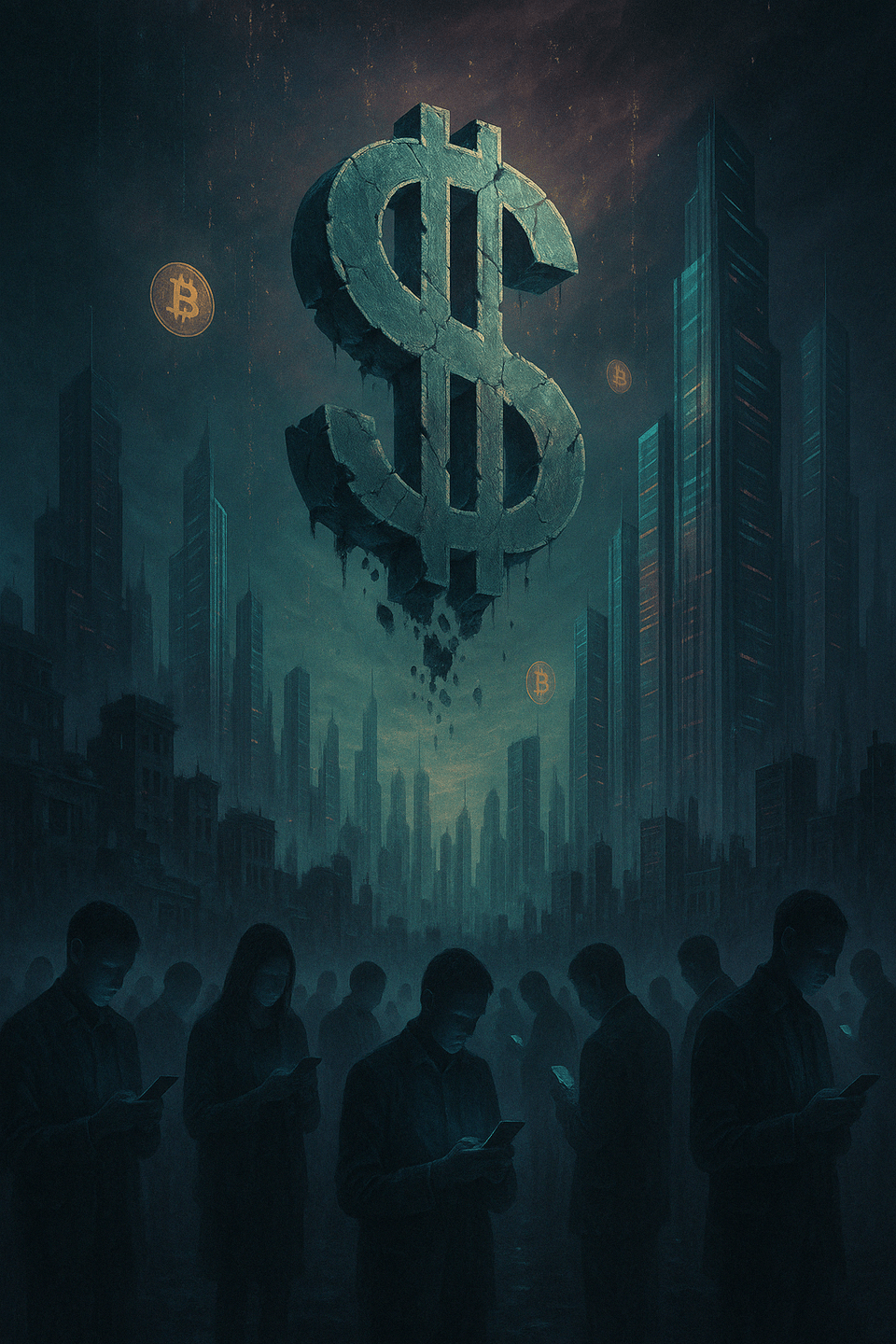
"The dollar's decline is a strategic shift rather than mismanagement, marking a transition from a" gold-backed system to one lacking intrinsic value. As this occurs, corporate power rises to fill the vacuum, offering digital currencies and alternative systems. This leads to a new era of governance where citizens become consumers in a commodified democracy, believing they chose their path.
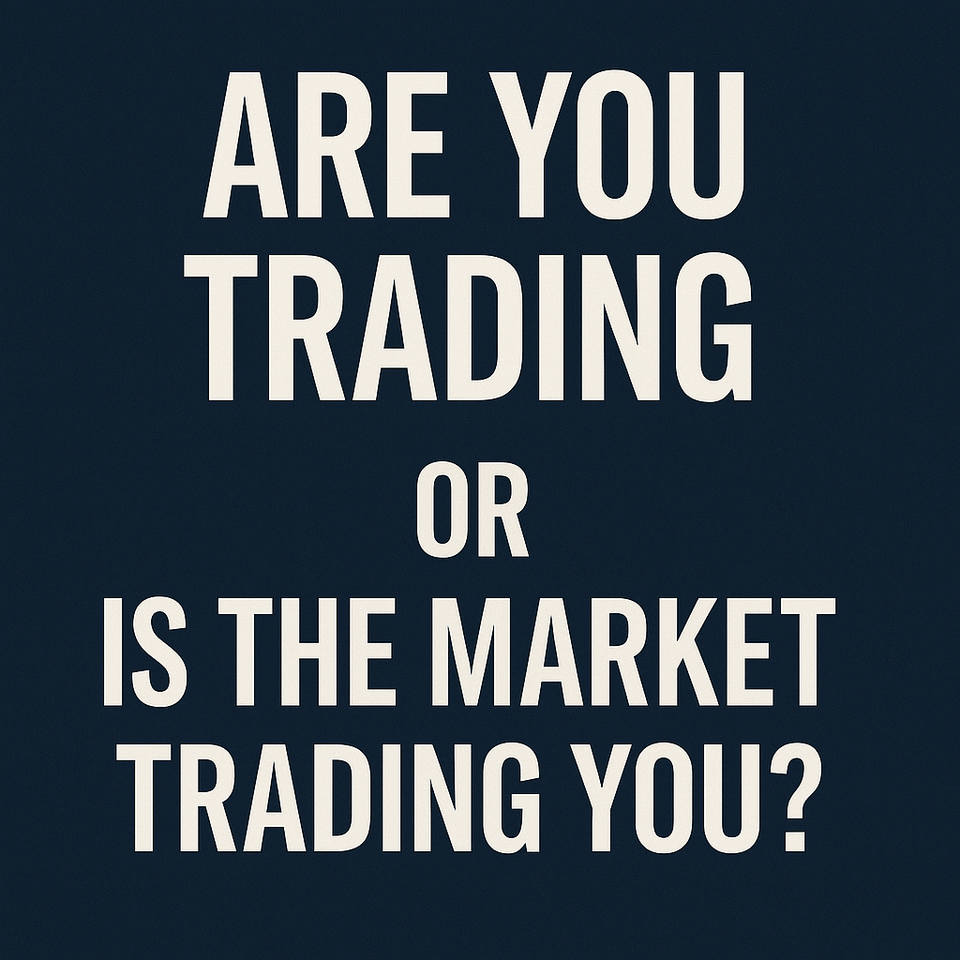
Sayed Hamid Fatimi's "The Philosophy of Markets" challenges conventional views on trading, suggesting that markets are not neutral but adversarial systems that exploit predictability and emotions. The book emphasizes the importance of understanding market structure, belief, and behavior over traditional analytical methods. It also discusses emerging financial alternatives like crypto and decentralized systems, proposing a shift toward a post-institutional world.

A deeply personal reflection on betrayal, survival, and the unseen hand of Allah. Through hardship and hidden enemies, this piece explores the limits of human planning and the boundless reach of divine will—a living testament to the truth that Allah is the best of all planners.

In an age of accelerating complexity and digital noise, reason can feel both urgent and elusive. We live in a world that talks constantly—yet thinks rarely. A world obsessed with being right, but unsure what right even means. The old maps of logic are still valuable, but they were drawn in a simpler time. Today,

In a world where facts are debated, belief systems clash, and identities multiply, the question of truth is no longer a philosophical luxury—it’s a daily necessity. We often speak of truth as if it’s a singular thing: something out there waiting to be discovered, like a hidden treasure buried beneath the noise. But truth is

In every human being, there exists a tension — between what desires and what discerns, between what clings and what surrenders. This inner divide is the site of life’s greatest struggle: the ego versus the soul. In Islam, this is not merely a psychological model — it is a spiritual reality.
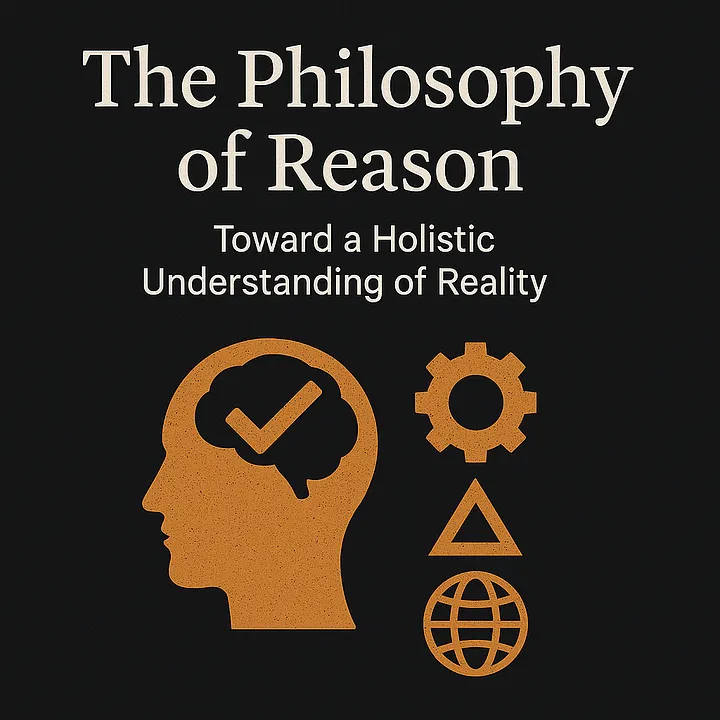
In an age of rapid change, growing complexity, and endless noise, we often take for granted the very faculty that allows us to navigate it all: reason. But what is reason, really? How does it function in our daily lives? And most importantly, how can we cultivate a form of reasoning that leads not just
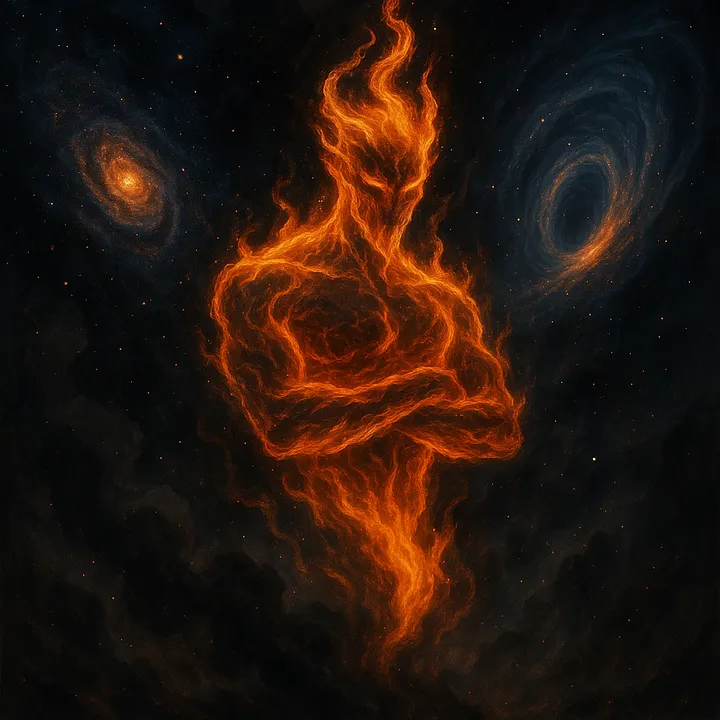
Introduction Within Islamic theology and broader mythological traditions, jinn are depicted as intelligent, volitional entities created from “smokeless fire” — a form distinct from both human and angelic ontologies. Despite their prominence in religious and folkloric literature, jinn remain largely unexamined within scientific discourse. But what if these entities, long thought to belong solely to

Introduction — The Quest for Truth For centuries, humanity has searched for the ultimate truth behind existence, consciousness, and the universe. This search spans across diverse disciplines — science, philosophy, religion, and theology — each offering its own perspective on the nature of reality. Traditionally, these paths of inquiry have been viewed as separate, often